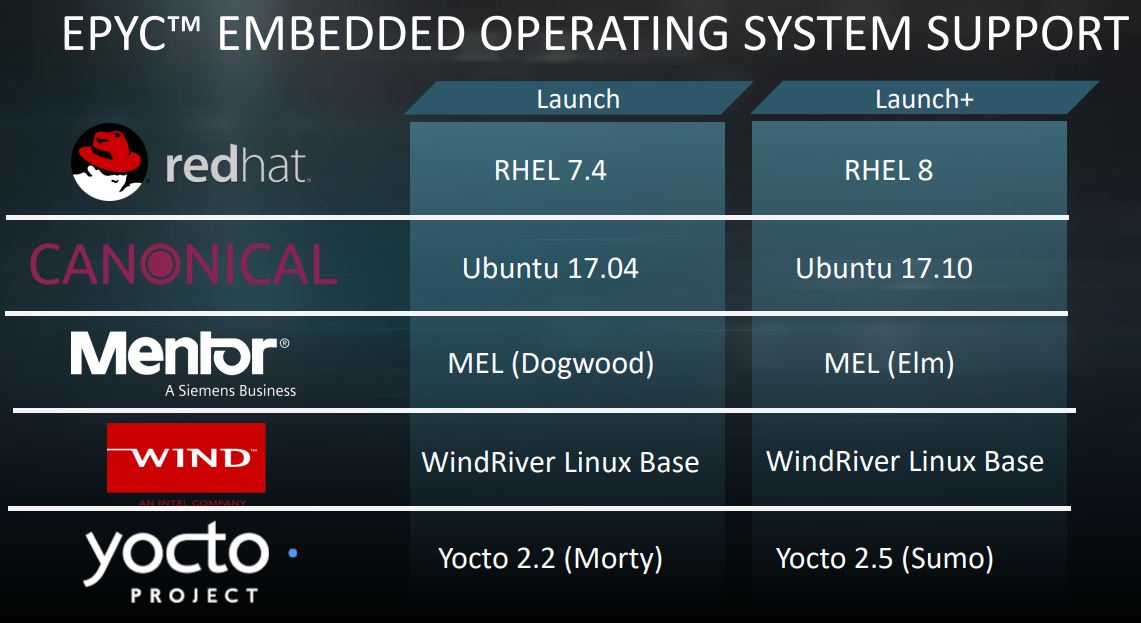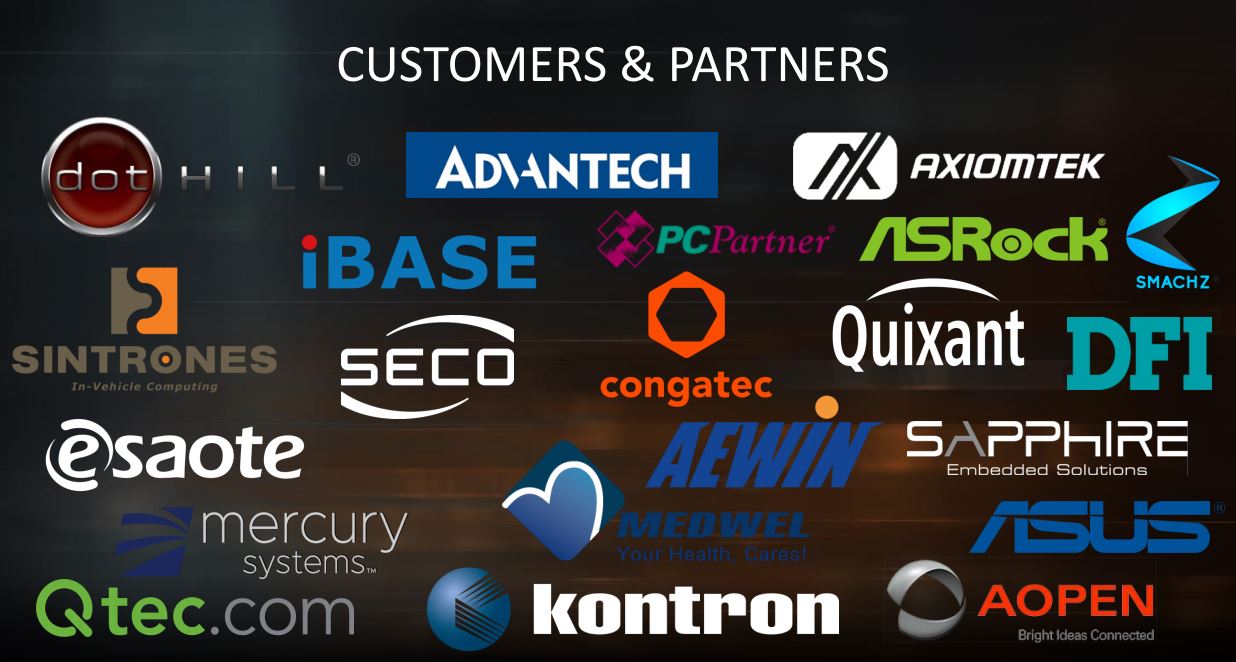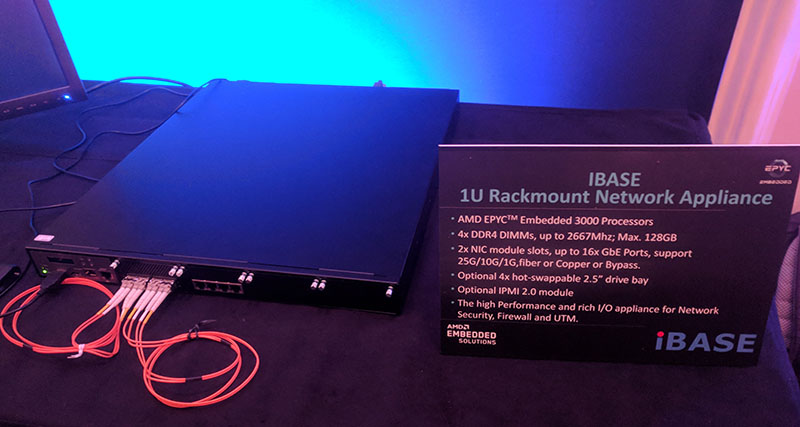AMD EPYC Embedded 3000 Series Ecosystem
In terms of the OS support, we see an interesting slide. Ubuntu 17.04 is the Launch support, not 16.04 LTS line. With Ubuntu 18.04 LTS likely out when these systems are first deployed, this may be largely academic, but you generally want the current LTS solution supported in embedded processors designed to be deployed for many years beyond their data center counterparts.

AMD had one customer and partner slide in the deck. Again, we would have liked to see some larger OEMs in the mix beyond some of the purely embedded players. HPE was present at the launch event and demoed the AMD EPYC Embedded 3000 series alongside an HPE ProLiant DL385 Gen10 but the test box was not designated as an HPE embedded system.

AMD had a partner showcase at the event and showed off an iBASE 1U rackmount appliance built for the networking segment.

That was one of the best server shots we could get aside from the Wallaby platform running many of the demos.
Final Words
Given the fact that STH has been a leading embedded x86 CPU review site since the Atom C2000 days (September 2013) the natural feeling after this event was we want them in the lab. The public Intel Xeon D-2100 series (Skylake-D) launch happened and we had production hardware in the lab the same day. We expect Intel partners to have the Intel Xeon D-2100 series platforms for general public consumption in March 2018. What we want to see on the AMD side is a widely available platform, in a standard form factor so developers and system integrators can use the new chips.
If AMD can get the ecosystem going, and these platforms into the market, they are going to be astounding. For the dedicated server/ dense server market, as an example, this is a lower-cost alternative at the 12 and 16 core points than anything Intel has to offer and could be a category killer in the market. For embedded buyers looking at Xeon Silver 1P systems for storage appliances, this will be a hard platform to pass up. Embedded design cycles take considerably longer than standard server products, so we are eager to see where AMD finds success with the new line.




Patrick, the L3 on SKL-X/SP/D is no longer inclusive, it’s mostly exclusive just like Zen’s.
Nanachi I read this as L3 is non-inclusive. AMD’s is inclusive right? That’s why STH is saying comparing L3 cache size isn’t right because with SKL-D you’d need to include the L2 as well.
When is Supermicro and HPE gonna come out which microservers for these. Imagine a HPE ProLiant Microserver Gen 10 based on this. I’d take 80% of the SMB market overnight. 12-16 cores and 128 to 256 GB will service just about any mom’n’pops business like a judo studio or cleaners without needing the cloud and it’d be great for SMB SP’s to sell.
AMD is also exclusive.
L3$ is filled with L2$ victims.
So they are more or less comparable, L3-wise.
Patrick, do you think AsRock and SuperMicro will be launching 3251 ITX boards? I suspect this processor could be exceptional for running FreeNAS (with a lot of room to move, hopefully)
Also when will pricing come out, frustrating to see nothing. I’d like to think it’s a sub $350 US CPU
Will be there some Out-Of-Band managment available? Like (iLO, iKVM). This feature is must, and I can’t find any information about it.
OOB management is typically provided via an external BMC (e.g. the AST2500) so it will be up to the ODM/OEM’s to spec OOB management into their solutions.
Any idea on pricing for all models?
I dont understand why Xeon-D went with 18 Core Max and Zen has 16 Core as well. What are the usage of these that is better fit then Xeon-E5?
In the previous Gen, Xeon-D was perfect fit for Cache and Reverse Proxy, basically Redis, or things that needs lots of memory but not so much computation power.
And Why are we still stuck with 10Gbps and not moved to 25Gbps Ethernet?
Ed – I think the number of 10GbE switch ports is still high right now, and companies like Intel are making 25GbE add-in adapters.
cpu socket ??